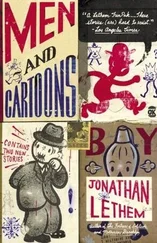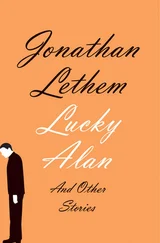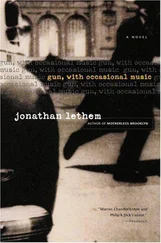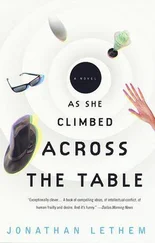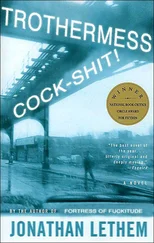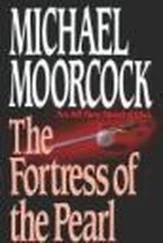What he needed was a hit on the pipe. A line or two lines or a dozen wasn’t going to do it tonight, wasn’t going to shrink his unendurable weight or expand the other inhabitants of the room from irritant size.
Outside, rain misting on the day-baked tar.
Pipe, bowl, and be damn sure the Fiddlers Three don’t weasel themselves a co-writer’s credit.
It was the fact that the venue was the New School, a name he associated with pinkish causes and the hiring of scantily credentialed professors, which had beguiled him to committing this mistake. That and the Dutch collector of original paperback art who’d enthused through his telephone a half-dozen times until Abraham relented. Perhaps also some morbid curiosity to encounter his colleagues: one Howard Zingerman and one Paul Pflug, incredible as the names might seem. Likely his own name Ebdus struck others the same way and it was the oddness of their monikers which had caused them to drift into this enterprise. Perhaps Abraham had accepted out of vanity. Certainly vanity. The term pop culture , thrown around so freely by the Dutchman. He was pop culture now. So let him go and see what that meant and let him meet Zingerman and Pflug. What harm to sit on a panel?
Well, he’d learned what harm, what cost to be baited out of hiding. The New School auditorium was no insurance against humiliation. The small crowd, fewer than fifty, nearly all of them lurching males with complex facial hair, had come expressly to meet Pflug. Pflug was himself perhaps thirty, had a long ponytail like many of his admirers, and appeared to be a weight lifter, though he also wore the wispy beard of an old man, or possibly a wizard.
Pflug worked in the style which had succeeded Abraham’s in time and overwhelmed it in popularity. That was, if Abraham’s style had in fact ever enjoyed any real popularity except with art directors, who had for a few years vied to hire Abraham himself and, when he proved unavailable, commissioned bald imitations of his work. This no longer happened. Though Abraham still worked, the vogue for arty psychedelia was done. Pflug was typical of what replaced it. He painted dragons and strongmen in the fashion of the posters of certain recently popular films, his skies full of billowy Maxfield Parrish clouds, his barbarians and gladiatrixes and even his dragons rendered with a uniform photorealist gloss, down to each feather and scale, down to each blond, blow-dried strand of their anachronistic haircuts.
In fact, it became clear it was Pflug who’d created the poster for one of the recently popular films. This explained the resemblance, and also the existence of his fans. They’d barely concealed their impatience through the brief panel, waiting for the chance to mob Pflug with posters, now reverently uncurled from cardboard tubes, which they hoped he’d autograph. No one here cared about paperback cover art, and why should they? It wasn’t a thing to care about.
The exception was the Dutchman who’d single-handedly organized this event, God help him, coming from Amsterdam to do so. And it was Zingerman he cared about, exclusively. The Dutchman, younger than Pflug even, was clean-cut and shaven. He’d sounded older on the phone, but in person was soft-spoken, dumbstruck with reverence. Zingerman was his hero. He’d been buying Zingerman originals from the warehouses of defunct paperback houses, from thieving art directors, from catalogues which circulated among aficionados like himself. The Dutchman was authoring a monograph, a catalogue raisoné, and sought Zingerman’s blessing. His Atlantic crossing should have been a direct pilgrimage to the feet of his master but he’d been shy, it now seemed, and so had arranged this whole sham panel, Zingerman-Pflug-Ebdus, “The Hidden World of Paperback Art,” as a blind.
Zingerman the painter had a certain integrity, a kind of Ashcan school realism. He was painterly in the mood of the Soyer brothers, or, if you were generous, even the earliest Philip Guston. Zingerman’s milieu was urban gothic, characters caught at heights of expressive torment, men tearing shirts from women and vice versa, but also moments of tenderness or even pensiveness. Small dogs and rusted cans lay in the gloom of Faulknerian porches. The women were only always a tad beautiful, Playboy bunnies in disarray, slumming. Hands, faces, and cleavages were all in clean focus, while much else was lost in chiaroscuro, a signature style which also saved man-hours and was surely far less wearing than Pflug’s autistic micro-detail in the long run.
The examples on hand, books sealed in protective plastic sleeves and two of the paintings themselves, were all from the Dutchman’s collection. The titles spanned four decades, from the forties, Paul Bowles and Hortense Calisher beside outright pornography-Zingerman’s treatment was consistent. He’d conceded to the seventies only his sfumato palette of grays and browns, brightening his tones and adding Laugh-In -style paisley bikinis and unbuttoned print shirts to his girls’ wardrobes, fluffy sideburns to his protagonists’ clenched jaws.
Zingerman the human? He was toxic. Maybe seventy, he stooped from a basketballer’s height, his enormous frame draped in a dust-colored suit and folded awkwardly behind the table they shared. Hair sprouted from his French-cuffed sleeves like he wore an ape suit beneath, but the skin of his hands and face was papery, drained of vitality. Against the auditorium’s posted prohibitions he chain-smoked cigars thick as his clubby fingers. He coughed frequently around the cigars. Hard to picture those fingers with a brush-but then so many things were hard to picture and yet were , like this evening’s occasion.
Zingerman wanted no part of Pflug, and barely seemed to tolerate the Dutchman, his Boswell. Perhaps they lay beyond some age requisite for Zingerman’s attention. As Pflug autographed posters-another artistic task he handled in excruciating detail, lavishing each with cartoons and inscriptions-Zingerman stretched in his chair, offered Abraham a cigar, and wholesaled his life’s philosophy.
“Lay the girls.”
“Sorry?”
Zingerman’s voice was graveled and abrupt and possibly Abraham had mistaken a baroque cough for speech.
“Lay the girls, every one of them.” Zingerman gestured at the paperbacks on the table before them, then back at the large originals hung on the curtain. “The models. That was my only consolation for staying in this dirty stinking business, and that’s why I can’t fathom a guy like you goes on painting these whatever-you-calls, geodesic forms. What are you, going to lay a geodesic form? That’s a lonely road.”
“Your models? You took them to bed?”
“To the bed, to the couch, right in the middle of the room with a leopard-skin outfit, in a mermaid costume, with fake fangs, with a toy gun in their hands, with paint all over my fingers, lay them, lay them, lay them. Strict policy. Hire the boy, hire the girl, arrange the pose, snap Polaroids, send the boy home, give with an excuse to start touching the outfit, fix the collar, hand on the ass, lay the girl, lay the girl, lay the girl, thirty-five years.”
“Like Picasso,” was all Abraham could think to say.
“You bet your ass. I couldn’t bear to paint those pictures any other way, I’d put my head in the stove. I tried telling my friend Schrooder, he thinks I’m joking. I’m not joking. You a married man?”
“I was.”
“We all were. These kids have no idea. That one there? You think he lays them? He’s too busy painting hair, painting feathers, painting the shine on bubbles. If I got one of those girls with the swords and the hair in my room I’d know what to do. Him, see those arms? I think he’s looking harder at the boys.”
Читать дальше


